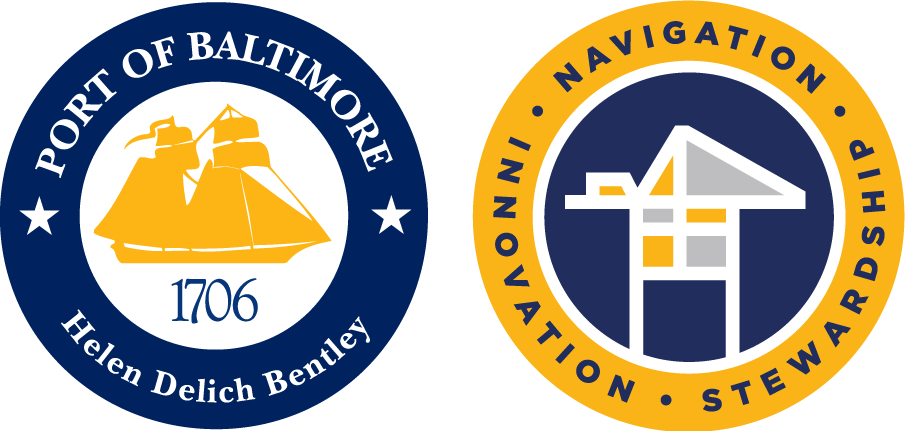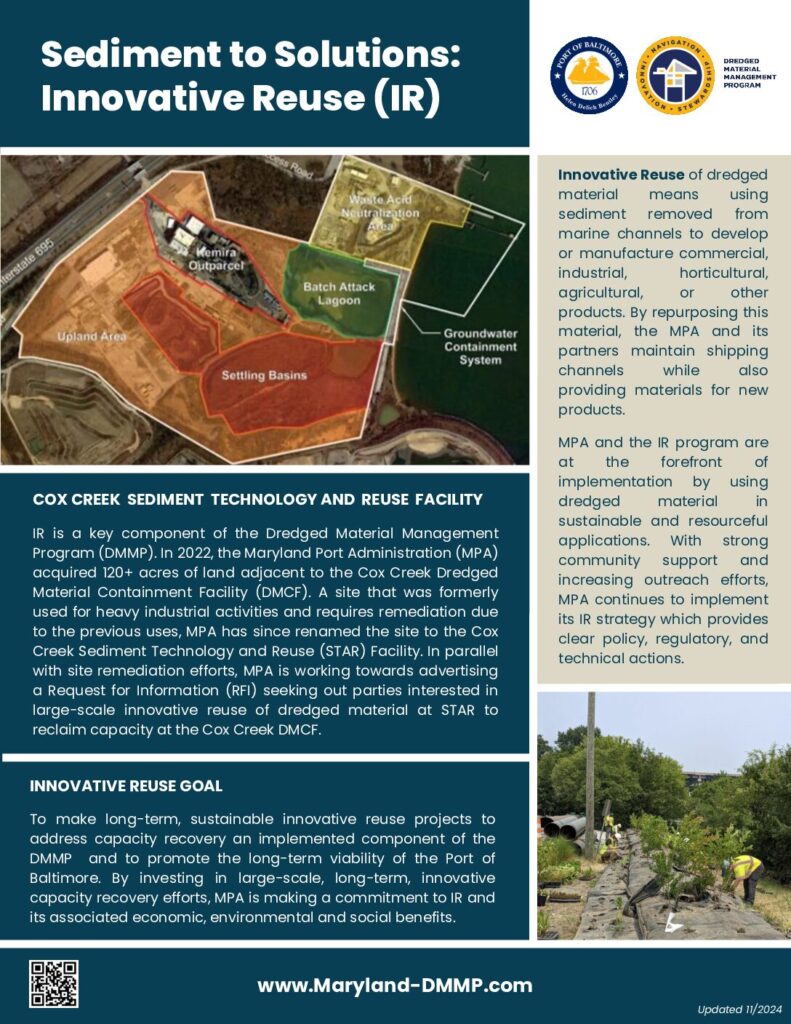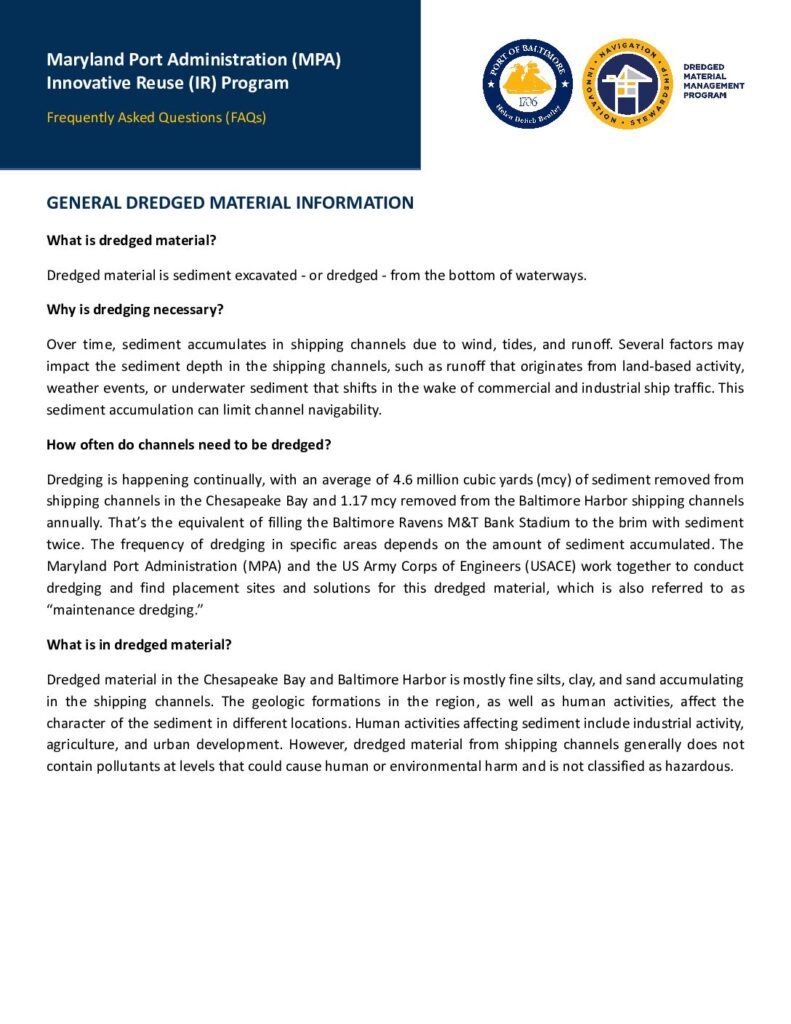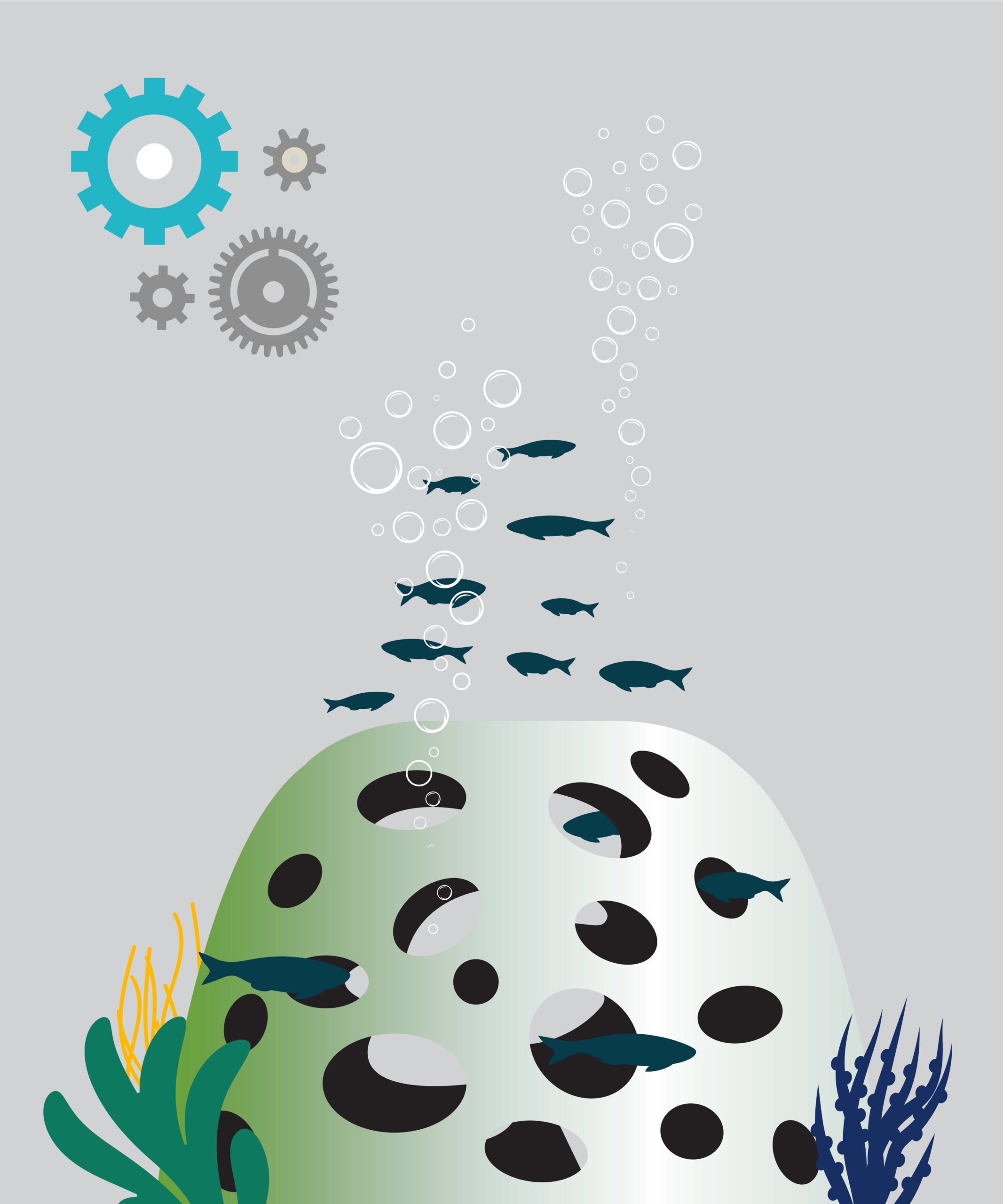
Innovative Reuse
When dredged material can be used to develop or manufacture industrial, horticultural, or agricultural products, it’s called Innovative Reuse. Innovative reuse applications for dredged material are a promising component of the long-term plan to maintain the depth of Port of Baltimore deepwater channels.
For detailed information about the Port’s innovation programs including project details and how to start the dredged material sample application process, visit the Innovative Reuse / Beneficial Use (IRBU) Web Tool.
Shared Goal
The Innovative Reuse and Beneficial Use Program goals are to make long-term, sustainable programs and projects to address capacity recovery from the Cox Creek Dredged Material Containment Facility (DMCF). This is an implemented component of the Dredged Material Management Program (DMMP) in Maryland, and to promote the long-term viability of the Port of Baltimore.
For more detailed information on CAD, please download our fact sheet and frequently asked questions:
Fact Sheet
FAQs
Working in partnership with the Innovative Reuse Committee, which provides strategy development advice, the DMMP has been exploring new uses for dredged materials for over 15 years. Seven MPA-supported applied research and development projects are underway to help make large-scale IR a reality.
All IR projects are based on Maryland Department of Environment Innovative Reuse and Beneficial Use of Dredged Material Guidance Document criteria, which guide prospective users of dredged material through the various necessary steps, permits, or approvals necessary based on the proposed project, including sampling requirements, environmental and public health standards, and long-term management needs. Request more information and start the dredged material sample application process.
Check out this video to see innovative and beneficial reuse of dredged material in action.
Innovative Reuse in Action
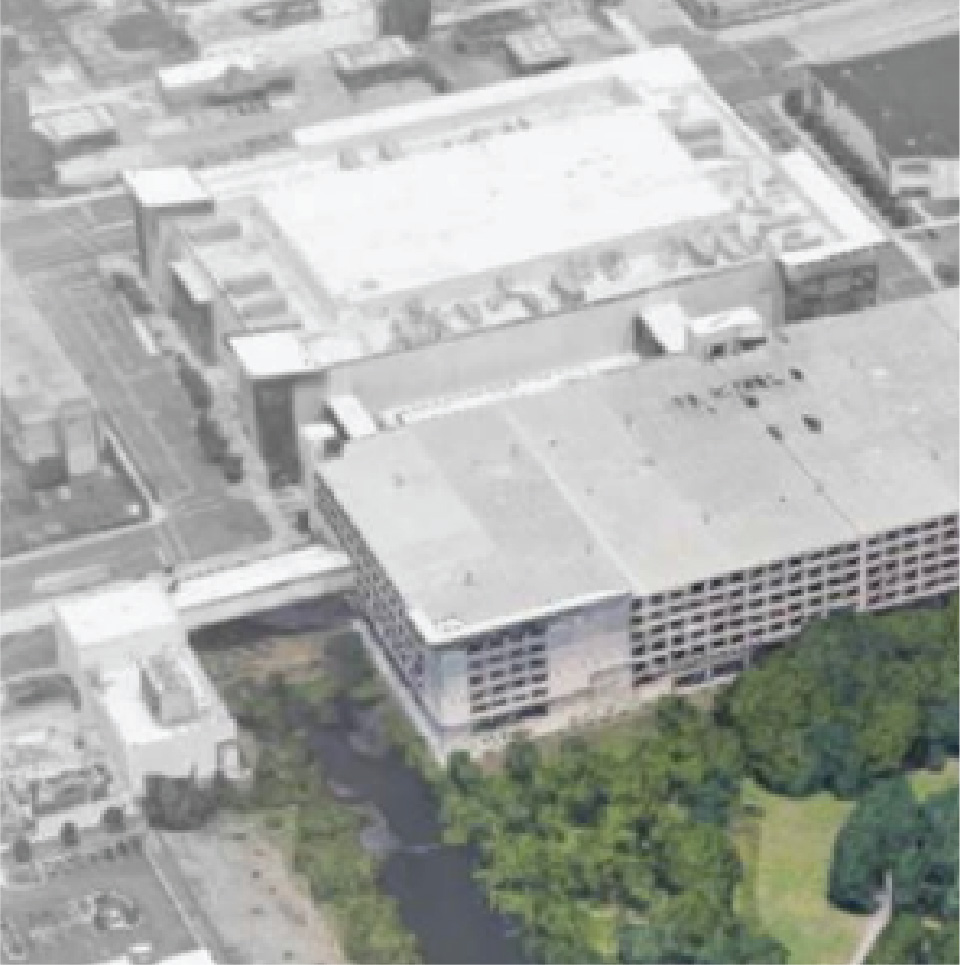
Ridgely’s Cove: Remedial Capping
Using dredged material from the Cox Creek DMCF, MPA helped restore the underutilized Ridgely's Cove park property in Baltimore City into a multi-use recreation area with walking trails.
Cox Creek Sediment Technology and Reuse Facility: Preparing for Innovation
MPA has acquired property adjacent to the Cox Creek DMCF for the primary purpose of furthering long-term innovative capacity recovery efforts though large-scale IR of dredged material and future cargo terminal/maritime use. The Cox Creek STAR facility will help in the capacity and demand planning beyond a 20-year time frame and is part of the 2020 IRBU Strategy.
Portions of the site are expected to be available for development as soon as 2026.
Large-scale IR activities at the Cox Creek STAR facility are necessary for continuing the mandated 20-year plan for Harbor material placement capacity.
Dredged material will be excavated, dried, and stockpiled onsite at the Cox Creek STAR facility to be used for opportunities to further the IR/BU program.
Current Research and Development Projects
To date, seven organizations have developed prototypes or proposals to use dredged material for commercial application, including:
Belden-Eco Products: Ceramic Bricks and Permeable Pavers
Dredged material pavers have the potential to be successful residential and commercial products. These products could be marketed/sold as a stormwater management solution for the Chesapeake Bay watershed.
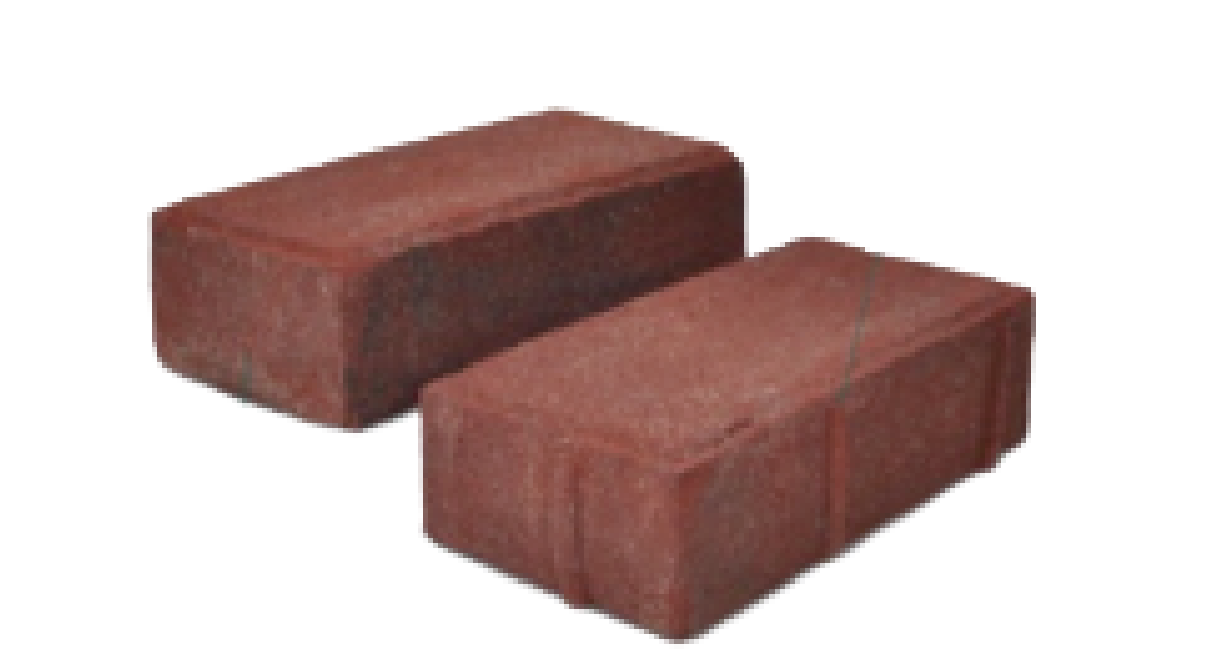
FasTrak Express: Growing Sod with Re-engineered Soil
This collaboration developed a reengineered soil for growing sod. The dredged material was blended with mushroom compost and sand as an alternative to the traditional growing medium in the sod growing process.
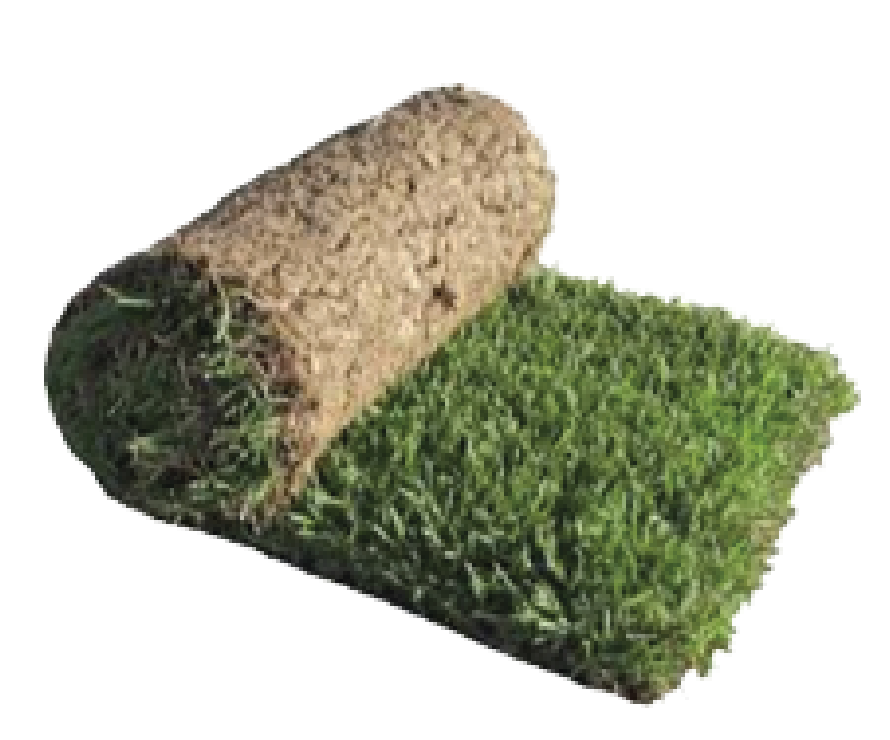
Northgate Environmental Management: Concrete Traffic Barriers and Shoreline Protection Structures
Dredged material is a cost-effective key ingredient in a new concrete barrier mix for low-stress uses like sidewalks, curbs, and gutters. Another potential use could include modular 3D-printed shoreline protection structures that could be considered to address coastal stabilization concerns including erosion from sea level rise and storm surge.
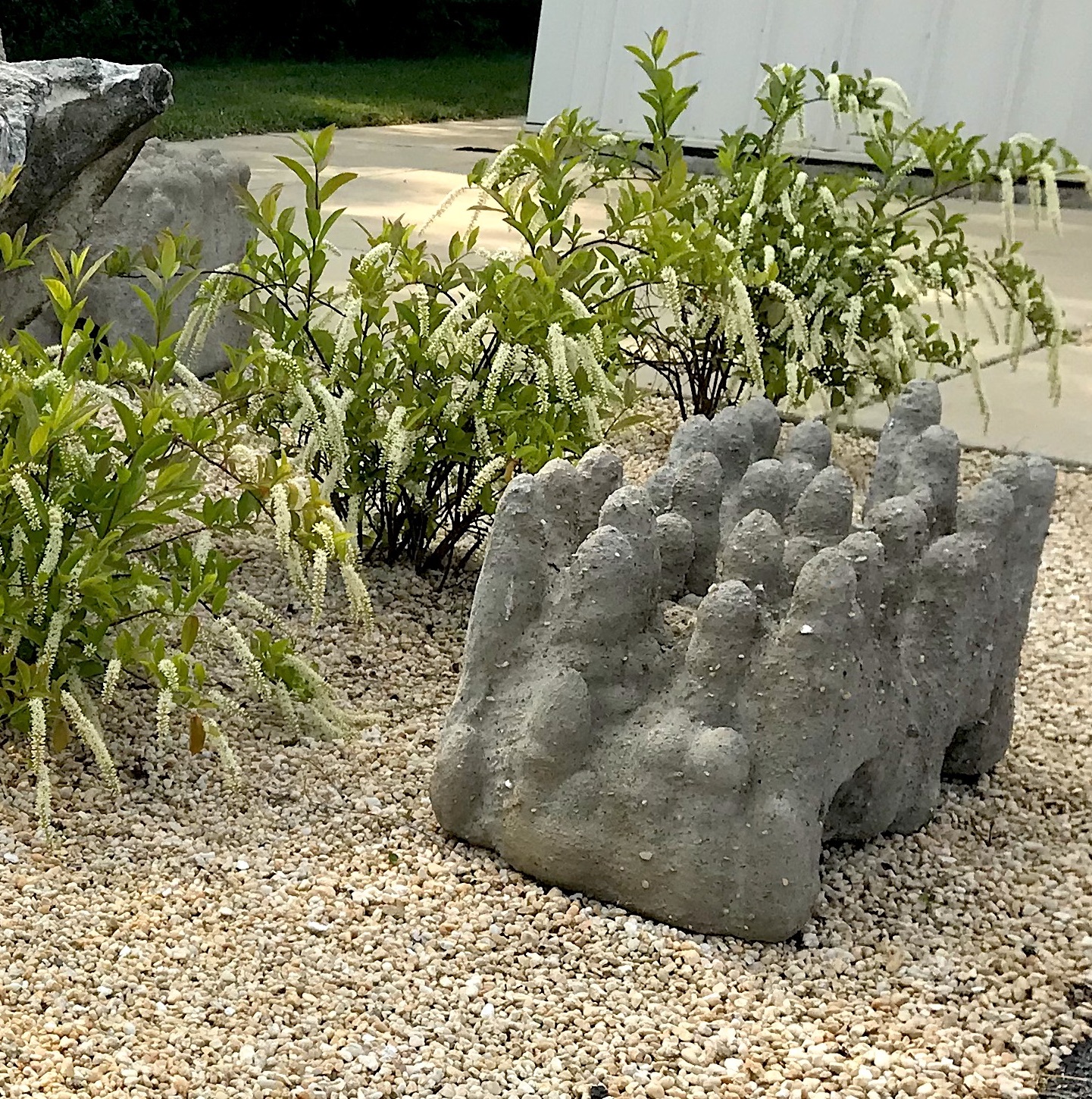

Suscon Products: A New Approach to Concrete
This is an exploration in using the sand component from the dredged material in concrete mixtures for use in products like retainer walls which would be a cost effective use of this local, natural resource.
Harford Industrial Minerals: Sustainable Lightweight Aggregate
A study on the feasibility of using dredged material to produce the lightweight aggregate used in a variety of applications, including concrete. If successful and at a large scale, this effort could provide a locally sourced and produced sustainable alternative to virgin aggregate material typically obtained from quarries.
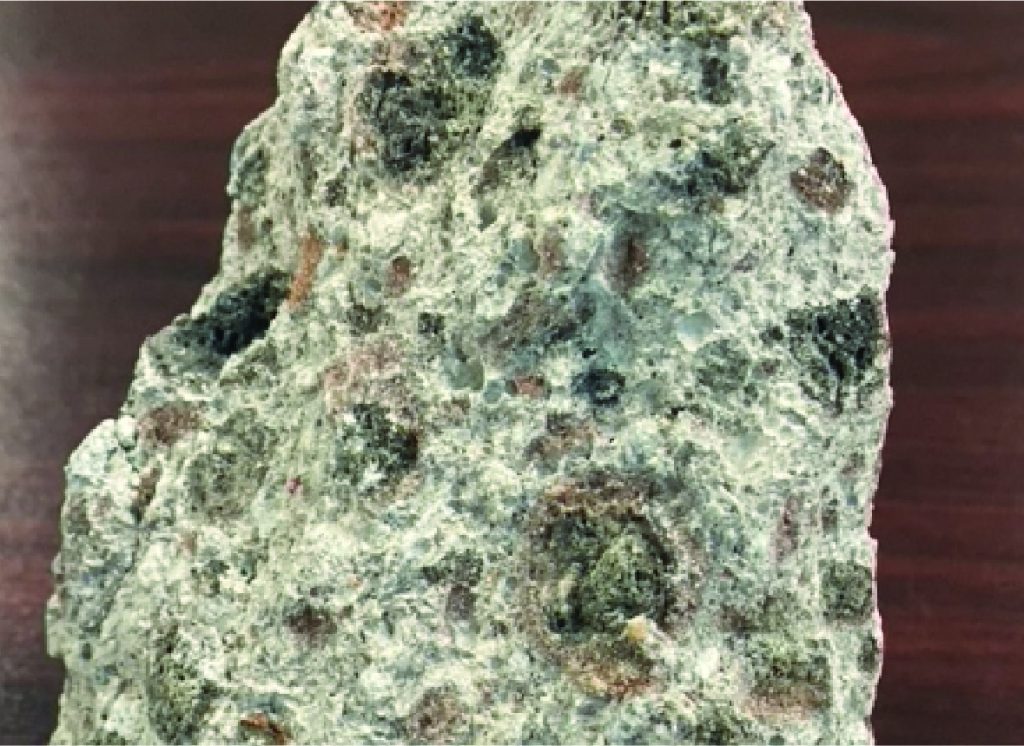
CSI Environmental: Upland and Shoreline Berms
Successfully demonstrated that CSIE's process can fill and dry geotextile tubes with dredged material, and then create both shoreline and upland vegetated berms. Native plants that performed the best were identified for future best practices. Results also showed dredge material filled geotextile tubes can potentially contribute to coastal resiliency.

University of Maryland: Vegetative Earth Berms
Research about the use of dredged material to create vegetative earth berms, or short man-made ridge, is currently underway at the Cox Creek DMCF. This study focuses on the use of dredged material in the construction of vegetative earthen berms as part of erosion and flood control measures.
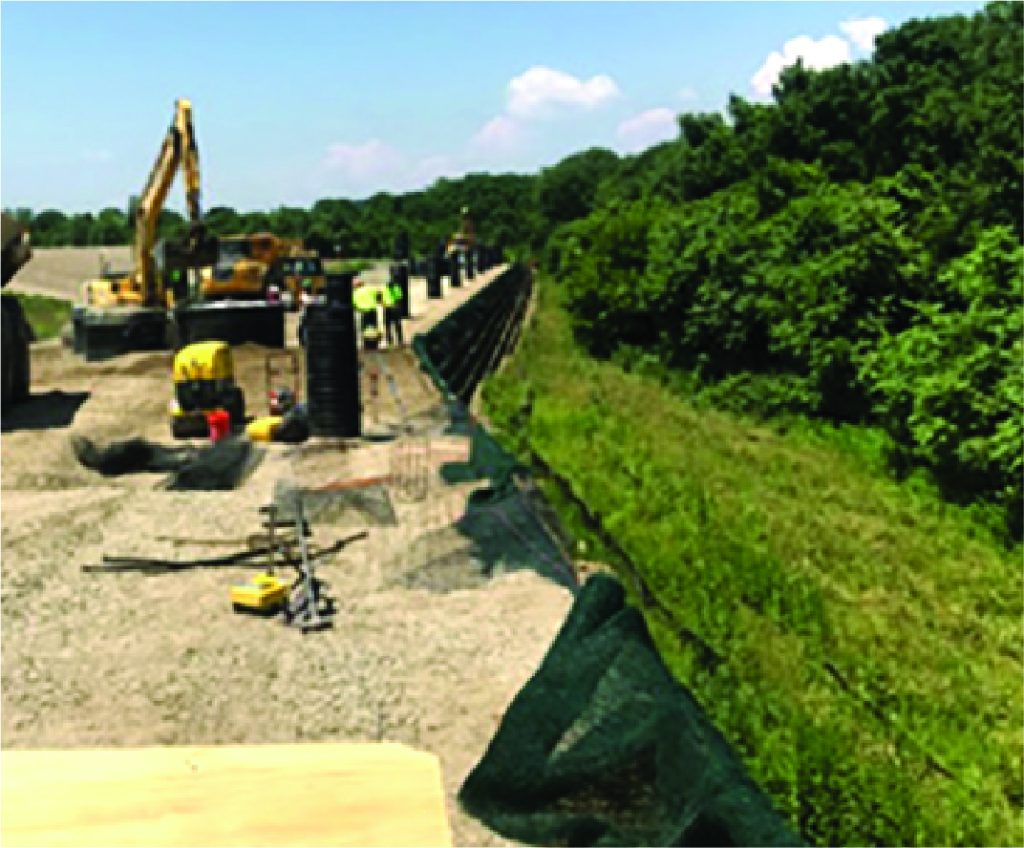
Request more information and start the dredged material sample application process
